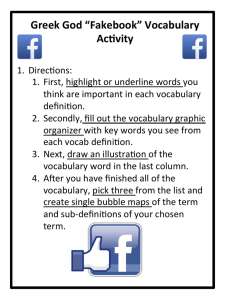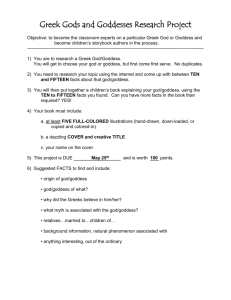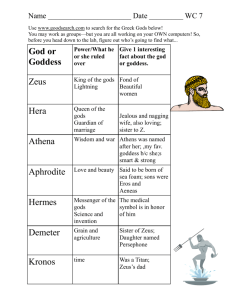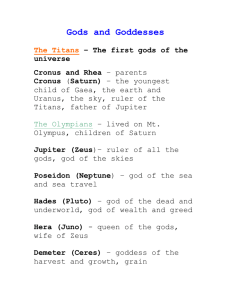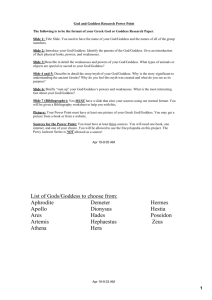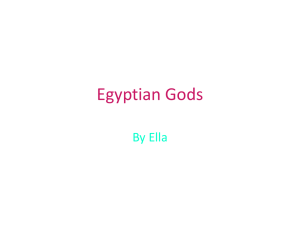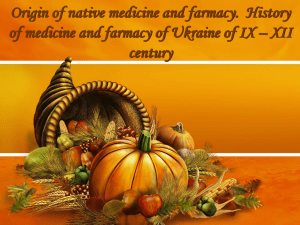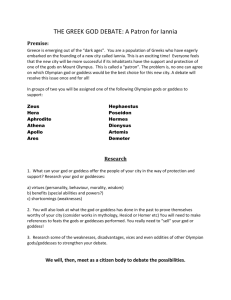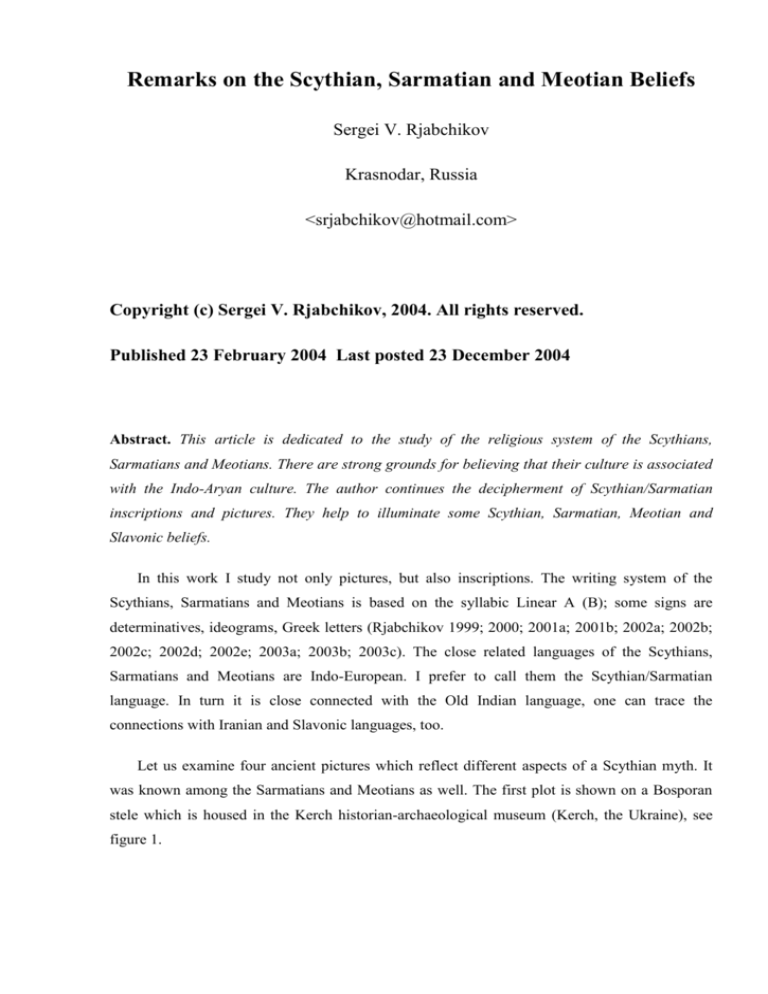
Remarks on the Scythian, Sarmatian and Meotian Beliefs
Sergei V. Rjabchikov
Krasnodar, Russia
<srjabchikov@hotmail.com>
Copyright (c) Sergei V. Rjabchikov, 2004. All rights reserved.
Published 23 February 2004 Last posted 23 December 2004
Abstract. This article is dedicated to the study of the religious system of the Scythians,
Sarmatians and Meotians. There are strong grounds for believing that their culture is associated
with the Indo-Aryan culture. The author continues the decipherment of Scythian/Sarmatian
inscriptions and pictures. They help to illuminate some Scythian, Sarmatian, Meotian and
Slavonic beliefs.
In this work I study not only pictures, but also inscriptions. The writing system of the
Scythians, Sarmatians and Meotians is based on the syllabic Linear A (B); some signs are
determinatives, ideograms, Greek letters (Rjabchikov 1999; 2000; 2001a; 2001b; 2002a; 2002b;
2002c; 2002d; 2002e; 2003a; 2003b; 2003c). The close related languages of the Scythians,
Sarmatians and Meotians are Indo-European. I prefer to call them the Scythian/Sarmatian
language. In turn it is close connected with the Old Indian language, one can trace the
connections with Iranian and Slavonic languages, too.
Let us examine four ancient pictures which reflect different aspects of a Scythian myth. It
was known among the Sarmatians and Meotians as well. The first plot is shown on a Bosporan
stele which is housed in the Kerch historian-archaeological museum (Kerch, the Ukraine), see
figure 1.
Figure 1
A key to this plot is Scythian/Sarmatian sign 80 ma and the sign "round" (THE SUN; the
determinative) which are located before the throne of a goddess. A fragment of a stele of the 2nd
- 1st centuries B.C. with a bas-relief of the goddess Aphrodite with certain local features and two
Eroses was found at the settlement Batareyka II of the Kingdom of the Bosporus (the Taman'
peninsula; the village Batareyka, the Krasnodar region) (Sokolsky 1978: 129, figure). N.I.
Sokolsky (1978: 133) believes that this syncretic goddess is the Bosporan supreme deity indeed.
I distinguished two similar compound symbols in the upper part of the stele. They consist of sign
80 ma and the sign "round" (THE SUN; the determinative). So the Barbarians - the Scythians,
Sarmatians and Meotians - called this goddess Ma 'The sun; solar; solstice; fire; funeral pyre'
(Rjabchikov 2003a; 2003b; 2003c: 5-7). Let us examine a Sarmatian golden brooch with the
representation of Aphrodite and two Eroses from the Kurdzhipsky burial mound (the village
Kurdzhipskaya, Republic of Adygea, Russia) of the 1st century A.D. (Galanina 1980: 26-27, 71,
110, table I [2], appendix 2, No 4). Sign 80 ma is presented to the left of Aphrodite. Undoubtedly
Ma is her local name. I conclude that in the first plot the sun goddess Ma is represented, too.
This goddess is well known as the Scythian main sun goddess Tabiti (associated with the Greek
goddess Hestia). The Scythian goddess Tabiti 'Heating' is related to the Indo-Aryan god Agni
'Fire' (Afanasiev 1868: 24; Raevsky 1994: 204-205). Moreover, this goddess has some features
of the Indo-Aryan goddess Usas 'Dawn' (Rjabchikov 2002e: 4). On the other
hand, the Scythian goddess Argimpasa '(The transition to) the sun/summer
(from) the winter - the cattle' (associated with the Greek goddess Aphrodite) is
one of incarnations of this goddess (Rjabchikov 1999; 2002e: 18-19, 68, 125,
139). In the Old Russian mythology there is the goddess Ma Kosh' (Mo Kosh')
associated with this Barbarian goddess Ma. Besides, Scythian/Sarmatian main
sun goddess is also named Aga 'Fiery; cauldron', this name is comparable in
particular with Old Indian agni 'fire', Agni 'the name of the god of the fire',
Russian ogon' 'fire', Ossetic ag 'cauldron' (Rjabchikov 2002e: 7, 10, 96, 125).
In the Russian fairy-tales there is the corresponding personage Yaga (Aga).
Let us continue the investigation of the first plot. The goddess holds a
vessel. A god stands near the throne. He holds another vessel. A horseman is
located to the right of the goddess. Another horse stands near the rider. In the
lower tier of the stele the same goddess sits on the throne. A point of a spear is
situated above the goddess in an upward direction from left to right. Two
rounds (the symbolism of the sun and fire) surround the goddess.
The second plot is represented on the Scythian or Meotian golden
ornament of a female head-gear of the 4th century B.C. from the
Karagodeuashkh barrow (the Krasnodar region, Russia), see figure 2.
Figure 2
This artifact is housed in the Hermitage (St. Petersburg, Russia). The plot has been investigated
by S.S. Bessonova (1983: 107-111) and N.V. Anfimov (1987: 131). I offer the original
interpretation of the majority of the topics. The upper (first) level contains the figure of a
goddess. Her position at the top allows to conclude that this is the supreme sun goddess of the
Scythian, Sarmatian and Meotian pantheon called Tabiti. It is safe to assume that
Scythian/Sarmatian sign 80 ma (the designation of the sun goddess) is depicted on her clothes.
Her image is separated from the other images with the help of five semicircles (the solar
symbolism) and four dividing lines. On the second level there is a god going at a chariot in
which two horses are harnessed. Scythian/Sarmatian sign 72 be is depicted on the hero's breast.
Scythian/Sarmatian be signifies 'beat; axe; to beat; to increase; to breed; symbolism of the deity
of the thunderstorm'. His hairs resemble the solar beams. Moreover, his clothes are decorated
with a pattern looking like a fragment of a net. Judging from "hair style" of this man, this is a
solar god. Scythian golden plates of a horse saddle are housed in the Museum of the historian
jewelry of the Ukraine (Kiev, the Ukraine); one ornament is shown in figure 3.
Figure 3
A fragment of a net is depicted on his clothes. A net is a symbol of fertility and abundance in the
Slavonic folklore and rites (Rjabchikov 2002e: 233-234). The wordplay is quite possible, cf. Old
Indian sic 'net; to pour out; to emit semen; to water (plants)'. The combination of the ideas "the
sun", "fertility; abundance", "water; semen" may help in the identification of this god. This is the
Scythian/Sarmatian god Tara (Targitai) corresponding to the Indo-Aryan god Indra. The name
Tara comes from Scythian/Sarmatian tara 'fire; horse; carrying across; saviour; protector; clean;
clear', cf. Old Indian tara 'fire; horse; carrying across; saviour; protector; clean; clear'. As has
been shown earlier (Rjabchikov 2002b: figure 3), there is a Scythian/Sarmatian record in which
the name of the god Tara and the ideogram "two horses" are united. And now one can call
attention to the Rig-Veda (e.g., I.6.2; I.10.3; I.16.2; I.84.3; II.18.3), the sacred hymns of the
Indo-Aryans. A chariot with two horses is a feature of the god Indra. A stripe with transverse
lines is a next border in this plot. But it is a Scythian/Sarmatian symbol of the sky (Rjabchikov
2001: figure 3; 2002b: figure 5; 2002e: 131). I suggest that these actions bear a direct relation to
the third sky (the symbolism of the summer solstice and midday). The following segment is
already limited by the symbol "the sky" on either side. So we look at images of the second sky.
Here there is a lamp surrounded by two gryphons. It is quite possible that this construction is
equal to the figure of Targitai standing between two horses. Then this god correlates with the
ideas "the sun; fire; light; lightning". The gryphon and the horse correlate with the ideas "the
fire", "the water", hence one can say about the sun, thunder, lightning, rain. I believe that Greek
, s 'gryphon' come from Scythian/Sarmatian gar- *ap- or p- (b-) 'the fire - the
water/beat/reproduction' (Rjabchikov 2002e: 33). The gryphon, otherwise the winged lion/eagle,
symbolises the roar of a lion and the rapidity of an eagle; this character describes the thunder and
lightning. Now one can examine the images of the first sky. A god and a goddess stand to the left
of the main sun goddess, the god Targitai and a goddess stand to the right. Scythian/Sarmatian
signs 33-01 Rada are incised on the head-gear of the central figure. It is one of the names of the
supreme goddess (Rjabchikov 2002e: 16, 152), cf. Old Iranian arta, ard 'personification of the
light', the names Rod and Rozhanitsa of the Old Russian supreme deities (1). The god standing at
the left of the supreme goddess is holding a pot. The supreme goddess is holding a rhyton, and
the god Targitai is taking it. The second level of this sky includes the following symbols: "the
head of a bull/cow", "the head of a goddess with hairs that look like the sun", "the head of a
bull/cow", "the head of a goddess with hairs that look like the sun", "the head of a bull/cow",
"the head of a goddess with hairs that look like the sun", "the head of a bull/cow". Such symbols
have direct parallels in the Scythian rites. In an ancient town known as Scythian Naples (the
Crimea, Ukraine) skeletons of four bulls or cows were discovered in a pit of cylindrical form the
walls of which were faced with masonry laid in twelve rows, and this pit was filled with soil,
ashes and fragments of amphorae dated to the 3rd century A.D. (Vysotskaya 1979: 165-166).
Obviously, four skeletons of bulls/cows are the solar symbols and denote four cardinal points
(Rjabchikov 2002e: 9). It is felt that four heads of bulls/cows on the Karagodeuashkh ornament
also denote cardinal points. Three vertical stones were used in some rites connected with the
worship to the sun and fire at an ashery in that town (Vysotskaya 1989: 77-78). Three asheries
(hills) were placed alongside each other in the Scythian Ust-Alminskoe settlement (the Crimea,
Ukraine) (Vysotskaya 1989: 78). I think that the three stones at one ashery in the first case and
the three asheries in the second case describe the sun/fire deity who is situated in the three parts
of the Universe simultaneously according to the Indo-Aryan beliefs (Rjabchikov 2002e: 51).
Hence three similar female heads on the Karagodeuashkh ornament resembling the sun designate
the sun/fire deity existing in three conditions simultaneously. In some Russian fairy-tales three
characters by the name Yaga are presented, therefore it may be an reflex of an archaic myth.
The third plot is depicted on the golden plate of a Meotian (Sindian) rhyton which was
discovered at the village Merdzhany (near Anapa, the Krasnodar region, Russia), see figure 4
(after S.S. Bessonova).
Figure 4
Let us consider this drawing. The World Tree is on the left. A goddess sits on the throne and
holds a pot. A horse's skull hangs at a pole. A rider holds a rhyton. According to M.I. Rostovtzeff
(1913b: 139), a woman at this picture is the supreme Bosporan goddess, this image is repeated in
other analogous images. The research by M.I. Rostovtzeff (1990) of images of an equestrian god
in the ancient art of the south of Russia is of interest as well. The third plot has been investigated
by S.S. Bessonova (1983: 111-115) and N.V. Anfimov (1987: 135-136).
In spite of different details of the first, second and third plots, I can reconstruct the common
line of conduct of the basic personages. The chief character is the sun goddess Tabiti (Ma,
Aga/Yaga, Rada). She is holding a vessel. Usually it is a rhyton. The god Tara (Targitai) is
taking it. Then the goddess Tabiti is taking another vessel (pot) from a god standing at the left
position in the first and second plots. In the third plot this god is absent.
I shall try to realise this information. According to the Rig-Veda (II.36.1), the god Indra is
appealed to drink the soma liquor from the hotar's bowl, moreover, he has the first right to it. Old
Indian soma and hotar mean 'elixir' and 'sacrificial fire' respectively. On the other hand,
according to the Rig-Veda (I.1.1, I.76.2), the god Agni corresponds to the hotar. The soma liquor
is produced with the enkindled flame (Rig-Veda IV.25.1); furthermore, the longing Indra
received the pressed soma liquor from Agni (Rig-Veda III.22.1). Indra is the lord of the soma;
Agni brings him this juice (Rig-Veda I.76.3). The soma always helps Indra (Rig-Veda I.4.1,
I.32.3, I.52.3, II.11.11, II.16.2, II.17.1).
Therefore it is safe to say that the god Targitai (= Indra) took the rhyton/vessel (= the
hotar's bowl) with the soma liquor from the goddess Tabiti (= Agni) in the second and third
plots. Another god gave a pot to Tabiti. He corresponds to the Indo-Aryan god Savitar. It is
known that the latter prospers the home, he gives descendants; besides, he invigorates the people
through the days and nights (Rig-Veda IV.53.7). A chariot with two horses is a feature of Savitar
(Rig-Veda I.35.2-3). He is the patron of the homestead (Rig-Veda I.123.3). He gives the people
most excellent riches, a goodliest stimulation (Rig-Veda IV.54.1, I.164.26). This god gave
immortality (Rig-Veda I.110.3).
In my opinion, in the Scythian/Sarmatian mythology the god Goitosir may play a role of
Savitar. In Goitosir's name one can pick out the word goi associated with the fertility (Rybakov
1987: 70). I compare Scythian/Sarmatian goi with Old Indian gaya 'house; household; family;
offspring; sky', Old Iranian (Avesta) gaya 'life'. The component sir- of this name correlates with
Russian syroy 'raw'. The god Agni is the giver of wealth, and this god is identified with the god
Savitar, the granter of treasures (Rig-Veda II.1.7). This report may be interpreted in the
Scythian/Sarmatian mythology in the following manner: the god Goitosir (= Savitar) gave the
goddess Tabiti (= Agni) a pot with seeds (semen etc.); then this goddess becomes "an
incarnation" of this god. Both Goitosir and Targitai surround Tabiti as they have "symmetrical"
features in the second plot. Here a goddess who stands near Goitosir is Ditagoia; a goddess who
stands near Targitai is Argimpasa (Rjabchikov 2001a; 1999). All the three goddesses who stand
alongside each other - Ditagoia, Tabiti and Argimpasa - are the images of the three fires in the
Scythian/Sarmatian (Indo-Aryan) beliefs. A round, the goddess Ma (Tabiti) and another round
also describe the three fires (the deity of the fire in three conditions) in the first plot. Let us
examine a Sarmatian bronze clasp which was discovered in the Roshava Dragana barrow of
Bulgaria (Bujukliev 1995: 39, figure 1 [6]). Here three Scythian/Sarmatian signs 33 ra (cf.
Scythian/Sarmatian ra 'the sun; fire') are attached to a round (THE SUN; the determinative). Let
us examine a Sarmatian clay vessel from the Rostov region, Russia (Maximenko 1998: 218,
figure 35 [1], 276). Here two groups consisting of three Scythian/Sarmatian signs 12 so are
presented. The wordplay is quite possible: Russian trizna 'funeral feast' < Scythian/Sarmatian tri
s- 'the three fires/suns', cf. Scythian/Sarmatian *tri 'three', so 'the sun; shine; heat; light; eye;
bright', Old Indian tri 'three'. Let us examine an Alanian medieval drawing within a crypt
(Kuznetsov 1962: figure 18). Three crosses are attached to a round (THE SUN; the
determinative). Scythian/Sarmatian sign "cross" reads ay, cf. Scythian/Sarmatian ay 'egg; the
World Tree; the sun; life, vitality; vigour; long life'. In all the three cases the fire existing in the
three conditions is described (2). Additional evidences concerning the identification of the Indo-
Aryan god Savitar and the
Scythian/Sarmatian
god
Goitosir have been offered by
the author earlier (Rjabchikov
2001c).
It is necessary to interpret the drawing of the horse's skull in the third plot. I think that this is
a hint of the sacrifice of a horse to the god Targitai; thus, the horse's skull and the horse of this
god in the third plot correlate with two horses of the god Indra in the Indo-Aryan mythology.
Interestingly, two horses of Indra without a chariot are mentioned in the Rig-Veda (I.5.4, I.6.2,
I.7.2) as well. The sacrifice of horses as a part of Scythian burial rituals is mentioned in the
History (IV, 71-72) of Herodotus; the skeletons of horses were discovered in Scythian,
Sarmatian and Meotian burials (Rostovtzeff 1925: 315, 321, 350-351; Mozolevsky 1972: 274277, Rjabchikov 2002a; Zhdanovsky 1984: 83, 88-89, Rjabchikov 2002e: 45, 170; Anfimov
1987: 50-51, Rjabchikov 2002e: 11, 38, 148).
The fourth plot was represented in the crypt of Anthesterios of the 1st century B.C. - 1st
century A.D. in Panticapeum, the capital of the Bosporan kingdom (Kerch, the Ukraine)
(Rostovtzeff 1913a: table LI [6]; 1914: 170-182), see figure 5 (after the author's drawing).
Figure 5
One can try to interpret this picture. It is anticipated that a woman sitting on the throne is a
Sarmatian goddess (Fedorov-Davydov 1975: 15). This plot has been investigated by S.A.
Yatsenko (1995), too. I offer my own interpretation of this plot. The goddess on the throne is Ma
(Tabiti, Aga/Yaga, Rada). The goddess who is standing near the throne on the left is the goddess
Argimpasa (her drawing is severely damaged); the goddess Ditagoia and the god Goitosir (he is
holding a hydria) are standing on the right. The pot (hydria) and the rhyton (vessel) represented
in the different plots compare with two united bowls mentioned in the Rig-Veda (III.55.20). The
god Tara (Targitai) riding a horse is near this group. He is holding a club. According to the RigVeda (II.11.4), Indra is holding the vajra club (the splendid thunder). I suppose that Targitai's
club is a similar symbol. Two "petals" presented on the horse's body are solar symbols
(Rjabchikov 2002e: 32, 60, 118).
Figures 6a, b
Scythian/Sarmatian sign 33 ra (cf. Scythian/Sarmatian ra 'the sun; fire') is depicted above a spear
that is at the left (see also figure 6a). Two Scythian/Sarmatian signs - 12 so (cf.
Scythian/Sarmatian so 'the sun; shine; heat; light; eye; bright') and "horse" - are inscribed near
figure of Targitai riding the horse (see also figure 6b). So-so 'The very bright sun' is another
name of Targitai, cf. the name of the Ossetic god Soslan (Rjabchikov 2002b). So the record (So
"horse") translates as: 'The sun (god) and (his) horse'. A foal and a group of Targitai riding his
horse (he is holding the spear) together with his second horse are depicted to the right in figure 5.
The spear is the symbol of the sun and thunderbolt (3). I believe that the foal was sacrificed to
Targitai, then it was transformed into the second horse of this god according to the ancient
beliefs. Now one can examine a yourt. Two similar persons sitting in it denote the god of the
other world. His name is Tagimasad '(The transition to) the sun/fire (from) the winter - the
connection' (4). The wordplay is quite possible: cf. Old Indian yama 'twin', Yama 'the name of
the king of the dead' (5). The spear of Targitai leans on the yourt and is attached to a tree (the
symbolism of the World Tree). Two crossed arrows (lines) denote Scythian/Sarmatian sign
"cross" that reads ay, cf. Scythian/Sarmatian ay 'egg; the World Tree; the sun; life, vitality;
vigour; long life'. A quiver (with a bow and arrows) is another solar symbol. A man holding a
vessel and standing near a table with three vessels is located under the yourt and denotes the
deceased. The similar text about the World Tree and Yama is presented in the Rig-Veda
(X.135.1; the translation by R.T.H. Griffith):
In the tree clothed with goodly leaves where Yama drinketh with the gods,
The father, master of the house, tendeth with love our ancient sires.
Interrelation of Ma (= Agni) and Tagimasad (= Yama) may be understood on the basis of the
Rig-Veda (X.12.6). On the other hand, Tara (= Indra) and Tagimasad (= Yama) are also
connected. It is known that for the first time Indra mounted a steed which Yama gave (Rig-Veda
I.163.1-2).
The root tar- (cf. the names Tara, Targitai) is preserved in several Russian words: cf., e.g.,
Russian truna 'coffin' < Scythian/Sarmatian *Tar-un '(the god) Tara' (The field materials, 2002),
Russian tarakhtet' 'to rattle' < Scythian/Sarmatian Tara '(the god) Tara', Russian tarabanit' 'to
clatter' < Scythian/Sarmatian *Tara ban- '(the god) Tara - the sun/arrow', cf. Scythian/Sarmatian
*ban- 'arrow; the sun; brightness; light or ray; shine', Old Indian bana 'arrow' and bhanu 'the
sun'.
The spear presented in the first and fourth plots is certain solar symbol; besides, it may be a
sign of the interrelations of the deities Targitai, Ma and Tagimasad.
Let us consider a Scythian/Sarmatian inscription on a slab with a Greek inscription dated to
307 A.D. (Solomonik 1959: 74-75, figure 30), see figure 7.
Figure 7
The signs are a round ('the sun; fire') and "two horses". This is an additional report about
Targitai and his two horses. Figures of two horses and the sun (thunder, cross) are an IndoEuropean religious symbol (Ivanov and Toporov 1991: 529, figure; Rybakov 1987: 506-507,
figure 85 [b], [g], 529, figure 89). Scythian/Sarmatian signs - 12 so and "two horses" - are
inscribed on a Sarmatian cauldron (Rjabchikov 2002e: 150). Two terracotta statuettes of the 1st
century B.C. and 1st century A.D. that show riders were found in the Bosporan town Phanagoria
at the modern Taman' peninsula (near the village Sennoy, the Krasnodar region, Russia)
(Kobylina 1974: table 23 [1], [2]). Two rounds (the symbolism of the sun and fire) are presented
on the bodies of the horses. In the crypt of Anthesterios there is another picture (Rostovtzeff
1913a: table LI [1]). A tree is surrounded by two horses. Here the tree designates the World
Tree, the sun, the god Targitai.
Let us examine an inscription on a Scythian (Sarmatian) slab from Panticapeum (Drachuk
1975: table XXXV), see figure 8.
Figure 8
Here I read the following Scythian/Sarmatian record: the sign "two horses" is united with two
signs 72 be, cf. Scythian/Sarmatian be 'beat; axe; to beat; to increase; to breed; symbolism of the
deity of the thunderstorm'. Under these signs there is sign 12 so, cf. Scythian/Sarmatian so 'the
sun; shine; heat; light; eye; bright'. It is another text concerning the sun/thunder god Targitai.
Let us examine two coins of the Bosporan king Sauromatus II (Anokhin 1986: 165-166,
tables 28 [616], 29 [623]).
Figures 9a, b
The first picture contains in particular the image of the supreme Bosporan goddess and the
following Scythian/Sarmatian symbols (see figure 9a): "a six-pointed star" (a solar symbol), "a
round with a line" ('the sun; fire'), sign 76 ra (Scythian/Sarmatian ra 'the sun; fire') and "a square
with a cross" (Scythian/Sarmatian ay 'egg; the World Tree; the sun; life, vitality; vigour; long
life'). The second picture contains in particular the image of the supreme Bosporan goddess and
the following Scythian/Sarmatian symbols (see figure 9b): "a six-pointed star" and "a square
with a cross". In both cases the Greek letter M denotes the name of the Scythian/Sarmatian
goddess Ma 'The sun; solar; solstice; fire; funeral pyre'. On the other hand, there is a Bosporan
record of Sauromatus II written down in Greek where the Bosporan (Scythian/Sarmatian)
supreme goddess is called Ma (Rjabchikov 2003b; 2003c: 5).
The cult of the cow is associated with the cult of the great goddess in the Meotian beliefs;
in particular, some parts or whole carcasses of cows were placed in the burials (Anfimov 1977:
116-117). In my opinion, it is an Indo-Aryan custom. According to the Rig-Veda (X.16.7), the
enveloping of a corpse with a cow flesh precedes the application of the fire on it. The burning of
corpses was forgotten afterwards, but some features of this custom were retained. However,
there are indications that some corpses of priests and priestesses were burned in the Scythian and
Sarmatian times (Rjabchikov 2002e: 235-236). In compliance with Ukrainian beliefs, a woman
who wants to become a witch must pass through the body of a dead cow (horse) (Ivanov 1991:
444). I suppose that this rite is a reflex of the custom of the enveloping of a corpse with a cow
flesh.
Let us examine a pattern on a Sarmatian mirror from the Kuban land (Solomonik 1959: 37,
figure VI [VIe]), see figure 10.
Figure 10
This picture consists of solar symbols (a wheel, eight rays, three rounds), a wavy symbol and
Scythian/Sarmatian sign 80 Ma. It is the name of the goddess Ma 'The sun; solar; solstice; fire;
funeral pyre'. So this goddess is associated with the sun (fire, thunderstorm) and the water
simultaneously (6). It is well to bear in mind that the name Mokosh' (Mo Kosh', Ma Kosh')
compares with the root mok- (Russian mokry 'wet', moknut' 'to become wet') (Ivanov and
Toporov 1992). The signs of the water and the sun are engraved on a Sarmatian jug from the
burial ground Zhurovka (the Rostov region, Russia) (Rjabchikov 2003a: figure 4). A Barbarian
name, s is presented in a Greek inscription dated to the middle of the 2nd century A.D.
from Olbia (the Ukraine) (Treshcheva 1977: 166). I read this name as Scythian/Sarmatian Ma
*tan- 'The sun - the water'. One can try to find additional information about this goddess. A
sanctuary of the goddess Aphrodite, called was located in Phanagoria; according to
a Scythian myth, Heracles helped the goddess who lived in a cave to win giants (Strabo, The
Geography XI: 2, 10). The name of the temple and the encoded sense of the myth are close
connected. I suggest that the giants (cf. Scythian/Sarmatian *bar-/par- 'highest; supreme;
guardian; keeper') are symbols of the clean sky. Their death describes rains. Obviously, the
goddess Aphrodite, otherwise the Scythian/Sarmatian goddess Argimpasa having snakes instead
legs, describes the chthonic waters. The name Apatura (Apa-tura) is translated as '(The goddess)
overcoming waters' (Trubachev 1977: 19). I translate this name as Scythian/Sarmatian *Ap- tur'The waters - the abundance, fertility', cf. Old Indian ap 'waters', tura 'strong, powerful,
excelling; rich; abundant'. It is known that burials of priestesses of the goddess Argimpasa
(Tabiti) were discovered in the Bolshaya Bliznitsa barrow (near the village Vyshesteblievskaya,
the Krasnodar region, Russia) not far from Phanagoria (Rjabchikov 2002e: 167-168). Designs of
a head-gear and ornaments from this burial are devoted to the deities of the sun, thunderstorm
and water. I can say with reasonable confidence that these priestesses were served at the temple
of Apaturon somewhere in the environs of the modern villages Sennoy and Vyshesteblievskaya.
In conclusion let us consider a Scythian/Sarmatian record on a Sarmatian harp (Yatsenko
2001: 77, 175, figure 25d), see figure 11.
Figure 11
The text reads from left to right, and each group of signs reads from right to left. The inscription
reads as follows: 12-72 "round" (THE SUN; the determinative) "a sign of the sun/thunder" (the
symbolism of the three fires) "two horses" 12-12 59-33 "round" (THE SUN; the determinative)
80 - Sope/sobe "round" (THE SUN; the determinative) "a sign of the sun/thunder" (symbolism of
the three fires) "two horses" Soso Tara "round" (THE SUN; the determinative) Ma, which
translates as: 'A dog of the sun (7). (The symbolism of the three fires.) Two horses of (the god)
'The very bright sun', (otherwise) Tara. (The goddess) Ma'. I believe that this text tells of the god
Targitai who arrived to the goddess Ma (Tabiti).
Notes
1. See Rybakov 1994: 451-452.
2. See also Rjabchikov 2002b: figure 6.
3. See also the History (IV, 71) of Herodotus.
4. See Rjabchikov 2002e: 143.
5. See also Rjabchikov 2001d.
6. The Old Russian goddess Ma Kosh' is "the mother of the harvest" (Rybakov 1987: 508).
7. See also Rjabchikov 2003c: 4, 7.
References
Afanasiev, A.N., 1868. Poeticheskie vozzreniya slavyan na prirodu. Opyt sravnitel'nogo
izucheniya slavyanskikh predaniy i verovaniy, v svyazi s mificheskimi skazaniyami drugikh
rodstvennykh narodov. Vol. 2. Moscow.
Anfimov, N.V., 1977. Religioznye verovaniya u meotov. In: N.V. Anfimov and P.U. Autlev
(eds.) Sbornik trudov po arkheologii Adygei. Maykop: The Circassian Research Institute of
economics, language, literature and history, pp. 111-128.
Anfimov, N.V., 1987. Drevnee zoloto Kubani. The Kuban's Ancient Gold. Krasnodar: Krasnodar
Book Publishers.
Anokhin, V.A., 1986. Monetnoe delo Bospora. Kiev: Naukova dumka.
Bessonova, S.S., 1983. Religioznye predstavleniya skifov. Kiev: Naukova dumka.
Bujukliev, H., 1995. K voprosu o frakiysko-sarmatskikh otnosheniyakh v I - nachale II veka n.e.
Rossiyskaya arkheologiya, 1: 37-46.
Drachuk, V.S., 1975. Sistemy znakov Severnogo Prichernomor'ya (Tamgoobraznye znaki
severopontiyskoy periferii antichnogo mira pervych vekov nashey ery). Kiev: Naukova dumka.
Fedorov-Davydov, G.A., 1975. Na okrainakh antichnogo mira. Moscow: Nauka.
Galanina, L.K., 1980. Kurdzhipsky kurgan: Pamyatnik kul'tury prikubanskikh plemen IV veka do
n.e. Leningrad: Iskusstvo.
Ivanov, V.V. and V.N. Toporov, 1991. Indoevropeyskaya mifologiya. In: S.A. Tokarev (ed.)
Mify narodov mira. Vol. 1. Moscow: Sovetskaya entsiklopediya, pp. 527-533.
Ivanov, V.V. and V.N. Toporov, 1992. Mokosh'. In: S.A. Tokarev (ed.) Mify narodov mira. Vol.
2. Moscow: Sovetskaya entsiklopediya, p. 169.
Ivanov, P.V., 1991. Narodnye rasskazy o ved'makh i upyryakh. In: Y.G. Medyuk (ed.) Ukraintsi:
narodni viruvannya, povir'ya, demonologiya. Kiev: Libid', pp. 430-497.
Kobylina, M.M. (ed.), 1974. Terrakotovye statuetki. Chast' IV. Pridon'e i Tamansky poluostrov.
Moscow: Nauka.
Kuznetsov, V.A., 1962. Alanskie plemena Severnogo Kavkaza. Materialy i issledovaniya po
arkheologii SSSR. Vol. 106. Moscow: The Academy of Sciences of the USSR Press.
Maximenko, V.E., 1998. Sarmaty na Donu (arkheologiya i problemy etnicheskoy istorii).
Donskie drevnosti. Vol. 6. Azov: The Azov Museum of local lore.
Mozolevsky, B.N., 1972. Kurgan Tolstaya Mogila bliz g. Ordzhonikidze na Ukraine
(predvaritel'naya publikatsiya). Sovetskaya arkheologiya, 3: 268-308.
Raevsky, D.S., 1994. Skifsky panteon: semantika struktury. In: V.Y. Petrukhin (ed.) Istorikoetnograficheskie issledovaniya po fol'kloru. Sbornik statey pamyati Sergeya Alexandrovicha
Tokareva. Moscow: Vostochnaya literatura, pp. 198-213.
Rjabchikov, S.V., 1999. The Scythians, Sarmatians, Meotians, Russians and Circassians:
Interpretation of the Ancient Cultures. The web site "The Slavonic Antiquity":
<http://public.kubsu.ru/~usr02898/sl2.htm>.
Rjabchikov, S.V., 2000. The Preliminary Report on the Decipherment of the Proto-Slavonic
Writing System. The web site "The Slavonic Antiquity":
<http://public.kubsu.ru/~usr02898/sl27.htm>.
Rjabchikov, S.V., 2001a. The Interpretation of Some Sarmatian Motifs and Inscriptions. The
web site "The Slavonic Antiquity":
<http://public.kubsu.ru/~usr02898/sl30.htm>.
Rjabchikov, S.V., 2001b. Scythian and Sarmatian Sources of the Russian Mythology and FairyTales. AnthroGlobe Journal:
<http://www.anthroglobe.ca/docs/Sergei/scythian-sarmatian-Russian-mythology-fairytales.htm>.
Rjabchikov, S.V., 2001c. The Interpretation of a Scythian Solar Myth. The web site "The
Slavonic Antiquity":
<http://public.kubsu.ru/~usr02898/sl43.htm>.
Rjabchikov, S.V., 2001d. On a Scythian Record Inscribed on a Black-Lacquered Kanthare. The
web site "The Slavonic Antiquity":
<http://public.kubsu.ru/~usr02898/sl35.htm>.
Rjabchikov, S.V., 2002a. Arkheologiya skifov, sarmatov, drevnikh rusov i slavyansky fol'klor.
In: S.D. Kryzhytsky (ed.) Suchasni problemy arkheologii. Kiev: The Institute of Archaeology of
the National Ukrainian Academy of Sciences, pp. 214-215.
Rjabchikov, S.V., 2002b. Some Remarks on the Scythian and Sarmatian Religion. AnthroGlobe
Journal:
<http://www.anthroglobe.ca/docs/Sergei/scythian-sarmatian-religion.htm>.
Rjabchikov, S.V., 2002c. K voprosu ob interpretatsii skifskikh i sarmatskikh arkheologicheskikh
pamyatnikov. In: Tataurov, S.F., L.V. Tataurova and N.A. Tomilov (eds.) Integratsiya
arkheologicheskikh i etnograficheskikh issledovaniy. Omsk - Khanty-Mansiysk: Omsk
University Press, pp. 133-138.
Rjabchikov, S.V., 2002d. Sarmatskie nadpisi iz Karachaevo-Cherkesii. In: Tataurov, S.F., L.V.
Tataurova and N.A. Tomilov (eds.) Integratsiya arkheologicheskikh i etnograficheskikh
issledovaniy. Omsk - Khanty-Mansiysk: Omsk University Press, pp. 138-142.
Rjabchikov,
S.V.,
2002e.
Skifo-sarmatskie
istoki
slavyanskoy
kul'tury:
Materialy
Yuzhnorossiyskoy fol'klorno-etnograficheskoy expeditsii. Krasnodar.
Rjabchikov, S.V., 2003a. On Some Scythian and Sarmatian Symbols. AnthroGlobe Journal:
<http://www.anthroglobe.ca/docs/Sergei/scythian-sarmatian-symbols.htm>.
Rjabchikov, S.V., 2003b. Kollektsiya meotskikh drevnostey. The web site "Archaeology.RU Scythica-Celticum":
<http://www.archaeology.ru/ONLINE/Riabchikov_1/text.html>.
Rjabchikov, S.V., 2003c. Varvary i Bospor. Skifo-sarmatskie simvoly i texty. Krasnodar.
Rostovtzeff, M.I., 1913a. Antichnaya dekorativnaya zhivopis' na yuge Rossii. Atlas. Tabl. I CXII. St. Petersburg.
Rostovtzeff, M.I., 1913b. Predstavleniya o monarkhicheskoy vlasti v Skifii i na Bospore.
Izvestiya imperatorskoy arkheologicheskoy komissii, 49: 1-62, 134-140.
Rostovtzeff, M.I., 1914. Antichnaya dekorativnaya zhivopis' na yuge Rossii. Text. T. 1. Opisanie
i issledovanie pamyatnikov. St. Petersburg.
Rostovtzeff, M.I., 1925. Skifiya i Bospor: Kriticheskoe obozrenie pamyatnikov literaturnykh i
arkheologicheskikh. Leningrad: The Russian Academy of the History of the Material Culture.
Rostovtzeff, M.I., 1990. Iransky konny bog i Yug Rossii. Vestnik drevney istorii, 2: 192-200.
Rybakov, B.A., 1987. Yazychestvo Drevney Rusi. Moscow: Nauka.
Rybakov, B.A., 1994. Yazychestvo drevnikh slavyan. Moscow: Nauka.
Sokolsky, N.I., 1978. Fragment stely s izobrazheniem Afrodity. In: V.V. Kropotkin et al. (eds.)
Problemy sovetskoy arkheologii. Moscow: Nauka, pp. 128-132.
Solomonik, E.I., 1959. Sarmatskie znaki Severnogo Prichernomor'ya. Kiev: The Academy of
Sciences of the Ukrainian Soviet Socialist Republic Press.
The field materials, 2002 - The field materials of the South Russian folkloric-ethnographic
expedition under the leadership of Sergei V. Rjabchikov in 2002: the materials of Sergei V.
Rjabchikov, archives, Krasnodar.
Treshcheva, Y.N., 1977. Prosopografiya dolzhnostnykh lits Ol'vii I - III vv. n.e. Vestnik drevney
istorii, 4: 156-182.
Trubachev, O.N., 1977. Lingvisticheskaya periferiya drevneyshego slavyanstva. Indoariytsy v
Severnom Prichernomor'e. Voprosy yazykoznaniya, 6: 13-31.
Vysotskaya, T.N., 1979. Neapol' - stolitsa gosudarstva pozdnikh skifov. Kiev: Naukova dumka.
Vysotskaya, T.N., 1989. Skifskie gorodishcha. Simferopol: Tavriya.
Yatsenko, S.A., 1995. O sarmato-alanskom syuzhete rospisi v pantikapeyskom "sklepe
Anfesteriya". Vestnik drevney istorii, 3: 188-193.
Yatsenko,
S.A.,
2001.
Znaki-tamgi
iranoyazychnykh
narodov
drevnosti
i
rannego
srednevekov'ya. Moscow: Vostochnaya literatura.
Zhdanovsky, A.M., 1984. Podkurgannye katakomby Srednego Prikuban'ya pervykh vekov
nashey ery. In: N.I. Kirey (ed.) Arkheologo-etnograficheskie issledovaniya Severnogo Kavkaza.
Krasnodar: Kuban University Press, pp. 72-99.

